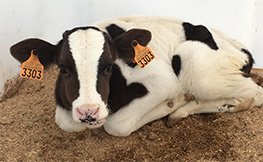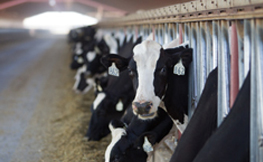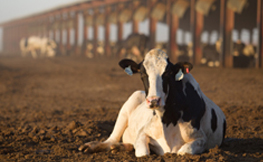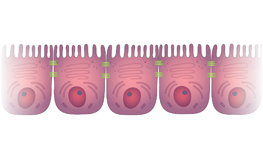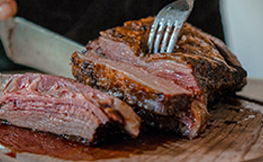By Erin E. Connor, Ransom L. Baldwin VI, Cong-jun Li, Robert W. Li, Hoyoung Chung
In this study, molecular markers of rumen development and gene networks regulating the rumen epithelium were identified.
Read
By D.M. Bickhart, P.J. Weimer
In the future, we may be able to estimate dairy production using a “genotype × environment × microbial” interaction model that accurately combines all factors affecting milk production.
Read
By Trevor J.DeVries
This research from the University of Guelph shows how the feeding behavior of dairy cows — including how, when and what cows eat of the feed provided to them — has a significant impact on cow health and productivity.
Read
By Thiago F. Fabris, Jimena Laporta, Amy L. Skibiel, Fabiana N. Corra, Bethany D. Senn, Stephanie E. Wohlgemuth, Geoffrey E. Dahl
This study from the University of Florida, Gainesville, found that cooling for the entire dry period increased milk yield up to 30 weeks into lactation. It showed that heat stress at any time during the dry period compromises performance of cows after calving.
Read
By J H McCaughern, A M Mackenzie, L A Sinclair
The results of a study in 60 Holstein-Friesian dairy cows highlight the need to take account of dietary effects on rumen pH when deciding on appropriate copper supplementation levels.
Read
By P Kazana, N Siachos, N Panousis, G Arsenos, G E Valergakis
A study from Aristotle University in Greece showed the ruminal pH of weaned calves is related to herd-level management of the pre-weaning period and weaning protocols.
Read
By Jörg R. Aschenbach, Qendrim Zebeli, Amlan K. Patra, Gabriele Greco, Salah Amasheh, Gregory B. Penner
The ruminal epithelium is the main site for absorption of key nutrients and electrolytes. Yet, the absorptive function has to be highly selective to prevent entry of microbes and toxins. This study outlines what researchers know, and still must uncover, about the factors that counteract barrier impairment and help with barrier restoration.
Read
By E H Cabezas-Garcia, A W Gordon, C P Ferris
An altered metabolic state is common in high-yielding dairy cows during early lactation. A study in the United Kingdom set out to determine if blood metabolites — such as beta-hydroxy butyrate (BHB), glucose and non-esterified fatty acids (NEFA) — could be correlated to energy status (EB).
Read
By R Roehe, M Martínez-Álvaro, M D Auffret, C-A Duthie, R D Stewart, M Watson, R J Dewhurst
The use of relative rumen microbial gene abundances to estimate meat fatty acids profiles has great potential as proxy traits for breeding.
Read
By Yanfen Cheng, Ying Wang, Yuanfei Li, Yipeng Zhang, Tianyi Liu, Yu Wang, Thomas J. Sharpton, Weiyun Zhu
This study evaluates the degradation pattern of rice straw by ruminal bacteria and identifies the bacteria that colonize rice straw during its digestion in the cow rumen.
Read
